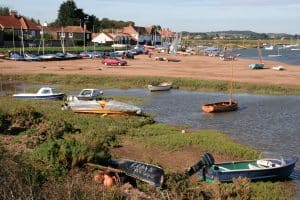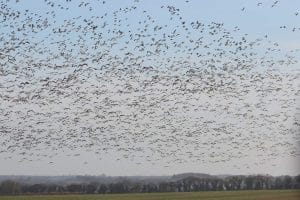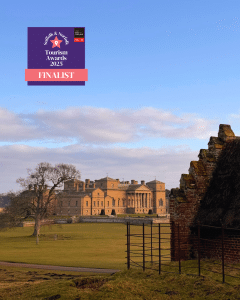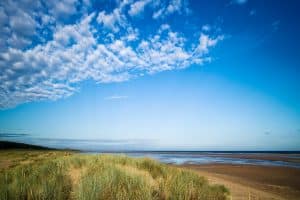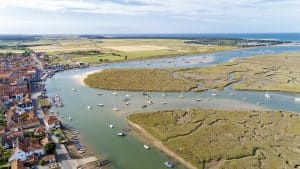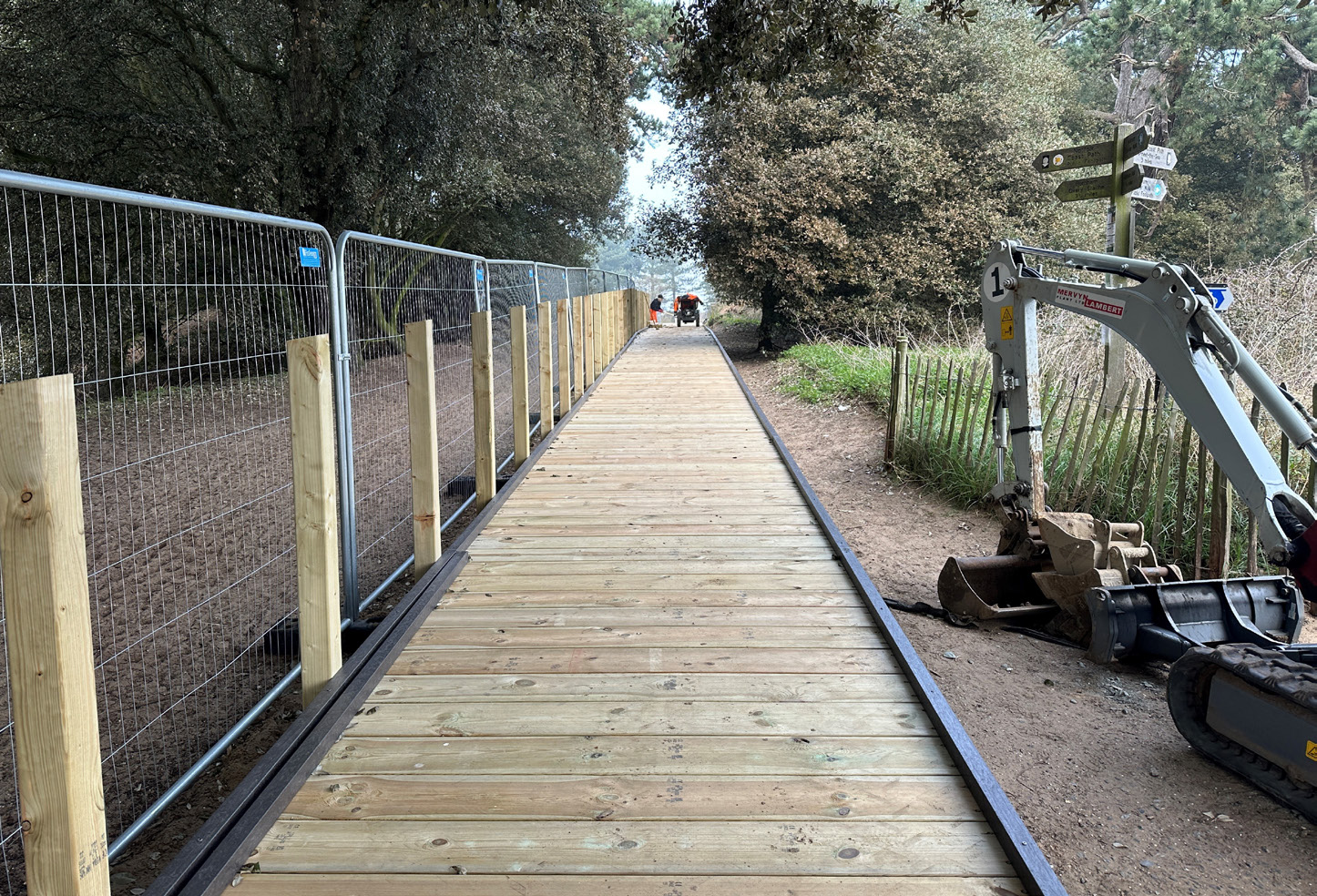
Bridging the gap on nature
March 29, 2025 | News | 4 minute read
A £150,000 investment to upgrade the boardwalk at Holkham Gap has improved accessibility and enhanced the relationship between people and nature.
With its sandy beach and pine wood backdrop, Holkham Bay is a stunning, unspoilt spot on the Holkham National Nature Reserve. An estimated one million people visit the area to enjoy the location each year. The access for many of these visitors is at Holkham Gap. The boardwalk which leads to the viewing platform overlooking the bay is a well-worn trail, part of the Norfolk Coast Path National Trail – one of only 16 National Trails across England and Wales. With such a heavy footfall, a £150,000 project was started in mid-March to ensure that the boardwalk, which sits on the definitive line of the Coast Path, is fit for purpose and accessible.
The project is led by Dr Katy Owen, Protected Landscapes Manager at Norfolk County Council and a Trustee of National Trails UK. She has worked closely with the estate to create a sympathetic and long-lasting solution. “Holkham is a well-loved estate and forward-thinking in the way it recognises the need for people, nature, farming and tourism to co-exist,” said Katy. “The boardwalk is the culmination of many years of collaborative work with the estate, and some time ago we recognised the need to upgrade the current facility.
“We previously applied for Rural Development Programme for England (RDPE) funding for innovation in tourism to rework the Norfolk Coast Path connection and created one of the first fully accessible stretches in the county. From Wells to Holkham, anyone arriving in a mobility vehicle can now pull up to an accessible parking space in town and travel along the Coast Path, up Lady Anne’s Drive to the estate and return to Wells, with accessible facilities and places to eat and drink along the way.
“Although this created a fantastic, immersive wild coast experience, the missing link was the boardwalk which takes people through marginal coastal habitats to see the incredible vistas across Holkham Bay. We recognised that the previous narrow and wonky access didn’t provide the quality of infrastructure that we want for this part of the landscape.
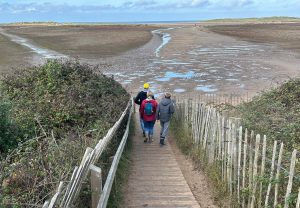
INNOVATIVE APPROACH
“Our legal obligation was to replace like for like, but we felt that this wasn’t good enough and so we applied for Farming in Protected Landscape (FiPL) funding and an award to improve accessibility from the Norfolk Coast National Landscape. Using this combined funding, we have created a new, wider boardwalk which will make the area more accessible to wheelchairs and pushchairs.
“The work follows a similar project at Brancaster and uses a new, durable, non-slip material made from recycled plastic bottles. This typically has a 75-year lifespan and is used to create a sub-structure topped with wooden planks, which are more in keeping with the landscape. The base material doesn’t shed micro-plastics, warp or burn and is modular, so if any area fails we can replace a section easily.
“The approach at Holkham Gap pushes the boundaries and, as the whole Norfolk Trails network now spans 1,500 miles with a significant number of boardwalks, we can apply learnings here elsewhere.”
A second phase of work is planned to replace the ramp onto the beach, an engineering challenge which is exacerbated by coastal erosion. “This is an interesting project as the ramp will need to be hinged and able to respond to high footfall and environmental changes,” said Katy. “The area often has extremely high tides which leave differing sand levels. When this work is complete it will make Holkham one of the most accessible coastal strips in Norfolk.
“One in five of us will be considered permanently or temporarily disabled during our lifetime,” said Katy, “whether through illness or old age, and it can make the world feel very small. Equity of access to nature is so important to our health and wellbeing. We want more people to be able to experience the sound of the wind whistling through the pine woods, smell the salty sea air and experience Holkham Bay with as few barriers as possible. These are important steps towards achieving that and it’s great to work with a traditional estate such as Holkham, which has an eye to the future and is willing to take the long view to get it right.”
Back to Journal Back to Journal